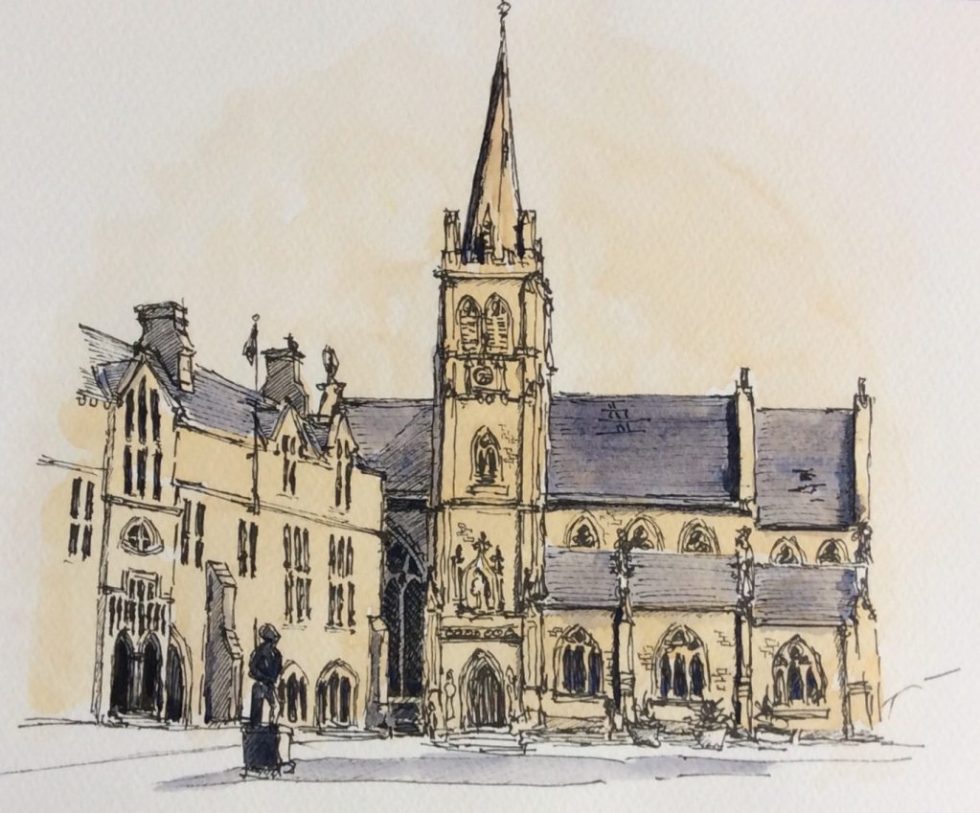
Yesterday was, perhaps our least successful day so far with cold windy weather and too much driving, but it did have some good points.
We knew that if we were to visit the places on our list from our Durham base we woud need to do some driving, so we headed off to Housesteads Roman Fort on Hadrians wall. The “sat nav” told us it was 49 miles by the shortest route and that the quickest route was 12 miles further. We’ve accepted that in the UK you can travel a long way quickly on motorways or the major A roads but on most other roads it is difficult to average 40 miles per hour. But if you choose the motorway you see much less, so the compromise, for us, is usually to take the shorter but slower routes.
So getting to Housteads took over an hour with Q spitting the dummy at the “bloody” GPS navigator which seems to insist on taking us through the centre of Durham wherever we want to go. At Housteads it was P spitting over the four pound parking fee in addition to the six pound each entry fee. And the senior concession was only 60p each. To get to the fort we had to climb a bleak, cold, windy hill, I cannot imagine what a poor soldier from Rome must have felt when he was stationed here in the second or third century AD. The fort is only foundations now but it has excellent signage and we could imagine how it must have been. The highlight for us was the communal latrine. Some people were walking along the wall but the wind was strong and cold so we headed back to the car.
Deciding on a different route home and choosing the GPS “shortest route” option had us driving on single lane roads over high moors at very low speeds but did take us to a nice pub where we got an excellent if rather late lunch. A brief but bracing walk in Alston (in Cumbria) then back home on another slow road left us exhausted and a bit grumpy.
A great nights sleep really helped and today we headed to the Beamish Museum, a 350 acre museum rather like Christchurch’s Ferrymead should be. 1920’s and 30’s trams and buses take visitors between areas, preserved or built as places from the early 20th Century. There is a town from 1910 a pit village and colliery, a 1940’s farm, a hall where the Squire may have lived and a railway where they were running a replica of one of the earliest train engines.
We found a village hall where local school girls were singing and dancing along with a group of elderly people as part of Dementia week so we joined in for a while and were made very welcome. Quilliam went down a coal mine and we saw pit ponies, draught horses, pigs and almost every farm animal imagineable. The place was quiet on a Monday which was a welcome situation.
Each place was working with excellent staff dressed in period gear keen to talk about what they do. There were bakers, sweet makers, blacksmiths and others selling their products. The weather was a bit better and we had a most enjoyable day.
No photos until I have a better internet connection. Sorry!!

hehe… glad to hear there been a bit of dummy spitting…. thanks for postcard, J was stoked! had to read a couple of times, but then he relayed to Mitch with quite a bit of accuracy! especially the no Lightning?! xx
PS, why am I getting some of your photos upside down…?
A good history lesson for us all. As regards to your GPS navigator, you would have enjoyed some good human interaction with the Dementia group.
Your birthday card has arrived safely. Thank you.
Judith & Ian
Enjoying your travel diary very much. Especially the paintings and photos.
Safe travels. Diana